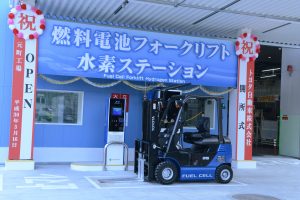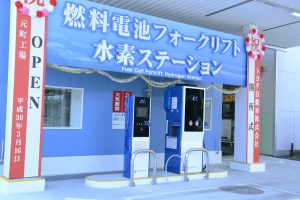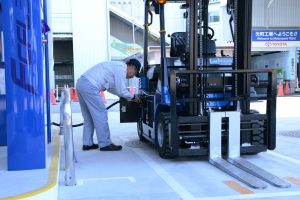Toyota Harnesses Hydrogen Power for Manufacturing at Motomachi
Toyota’s Motomachi factory is leading the way in using hydrogen power for its operations, adding another 20 fuel cell forklifts to its fleet and installing an on-site hydrogen station to fuel them.
It’s an appropriate location for this innovative move, as Motomachi, in Toyota City, is home to production of the Toyota Mirai fuel cell electric saloon. The new machines, manufactured by Toyota Industries Corporation, take the number of zero emission forklifts at work there to 22, building on the success of an initial trial with two vehicles.
The initiative is part of Toyota’s strategy for achieving its Plant Zero CO2 Emissions Challenge, part of its wider Environmental Challenge 2050 to significantly reduce emissions from all aspects of business and vehicles. The company has been developing and implementing low-emission production technologies and conducting regular kaizen (continuous improvement) activities. At the same time, it has also been making use of renewable energy and hydrogen in its plants.
Toyota intends to replace conventional forklifts with fuel cell equipment, bringing the number in service at Motomachi up to as many as 180 by around 2020, and starting their introduction at other plants, too.
The new forklifts have been deployed with support from a joint initiative led by Japan’s ministries for the environment and for economy, trade and industry, to promote the use of fuel cells in industrial vehicles and help realise a hydrogen society.
Fuel cell forklifts
Fuel cell forklifts use hydrogen fuel to generate electric power. They give excellent environmental performance as they emit no CO2 or substances of concern (SOC) during operation. They are also very convenient, as they can be refuelled in around just three minutes. Furthermore, as they can supply electricity, they can serve as a power supply source in emergencies.





